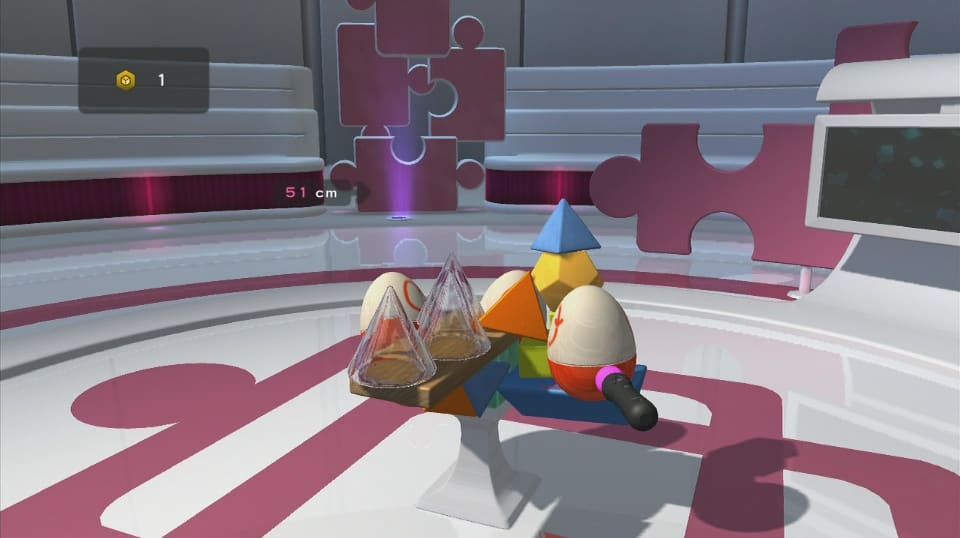You can trust VideoGamer. Our team of gaming experts spend hours testing and reviewing the latest games, to ensure you're reading the most comprehensive guide possible. Rest assured, all imagery and advice is unique and original. Check out how we test and review games here
Tumble stands amongst the ranks of mini-game puzzlers that are so inoffensively tolerable you can’t really find a bad word to say about them. The game has been developed as a launch title for PlayStation Move by the same guys who gave you Start the Party, a similarly harmless mini-game-heap built specifically for the platform’s launch. Tumble focuses on block-based physics: Pick up a block, place it on the designated surface, then add to the block to create a wobbling tower. Tasks will vary from stacking blocks to blowing blocks up in as wide a radius as possible, and when each is successfully solved you’re led to the next unlocked task room.
These are identically pristine chambers with an aesthetic that suggest you’ve been quarantined inside a Gap ad. In fact the entire game is surprisingly pretty for the minimalism it portrays. Imagine the film Cube if every side-room had been designed by Scandinavians and you get the crisp, white idea.
But more than being a game, Tumble functions as a demonstration of what Move can do. Pick up an awkwardly-shaped block, then flick your wrist to turn it about and fit it into a nook of your tower with immense precision. Hold the action button and turn your wrist and you’ll rotate the camera 360 degrees. Stretch your arm out and you’ll prod a block in three dimensions. It’s a simple exercise in new technology.
Puzzles get progressively more complex. The tutorial simply has you sticking a block into a hole, but three rooms in and you’ll be dealing head-on with random in-game earthquakes and gravity puzzles that cause particular blocks to either float or plummet to the ground. Because as minimalist as the game is, it consistently tries to maintain variation in every task. Blocks vary in both size and consistency. Glass blocks will be slippery, wood blocks will weigh more, glue blocks will keep the lot of them stuck together. Moving obstacles will put restrictions on how far you can keep building straight up and force you to create towers with branching block-arms.
In a game of multiplayer quickplay you’ll go head-to-head with a partner, deciding whether to play with or against one another on the fly. Play cooperatively and there’s less of a chance for your tower to tip over as you both throw in structural supports wherever you can. Play for points and you’ll inevitably end up with a wobbling design and a higher personal score.
While each task becomes more interesting and complicated in its own right, it becomes obvious very quickly that the Move experience in no way improves on what’s expected from a stack-then-destroy mini-game. Beyond the fact that Move introduces precision-gameplay, you’re repeatedly placed in front of puzzles and objectives that could easily be recycled for any platform, from console to mobile, right down to Newgrounds-style Flash.
It’s difficult to shake that sceptical feeling when you’re dealing with ambitious technology that simply offers you a slew of mini-games to choose from. At £7.99 on PSN Tumble doesn’t exactly tear a hole in your wallet, but nor does it present an incentive to actually buy the game. What it does do is offer a tech demo-style example of what Move can do in the basic realm of mini-games.
Tumble
- Platform(s): PC, PlayStation 3
- Genre(s): Action, Adventure, Indie, Puzzle, RPG, Strategy

/https://oimg.videogamer.com/images/d240/tumble_3.jpg)






